
Utes are hugely popular in Australia – in 2024 there were 230,000 new ute sales, making up 19 per cent of all new vehicles on the road.
Utes typically cover around 40 per cent more distance in their vehicles than the average car1. This means there are not only increased emissions from travelling further, but vehicle emissions and fuel costs are also multiplied simply because these vehicles are bigger and heavier.
Because of this, switching to electric utes can offer big savings in fuel and maintenance costs compared to traditional vehicles, at the same time making a big contribution towards reducing carbon emissions.
Despite the clear environmental benefits to electrifying the largest vehicles on our roads, it’s understandable that drivers not familiar with the capabilities of electric vehicles may have concerns about whether an electric ute can do everything their internal combustion engine (ICE) ute can.
In fact, electric utes – known as pickup trucks in the US - have many advantages over diesel counterparts, like instant torque, fast acceleration, and ample power to haul heavy loads. They also have sufficient driving ranges for everyday use, can power devices and tools, and perform "tank turns" if they have a motor on each wheel allowing the vehicle to spin in place, like a tank, to quickly change direction or navigate tight spaces.
While towing heavy loads will reduce driving range, many electric utes available overseas offer big battery pack options providing up to 800km driving range on a single charge.
Up until now, the main problems for electric utes in Australia are price, choice and supply. In 2023, only one model, the LDV eT60, was available, priced at $92,990 before on-roads - nearly double the cost of a diesel LDV T60 Pro 4X4. Specs included an 88kWh battery, WLTP range of 330km, 130kW motor with 310Nm torque and a one-tonne tow capacity.
There are also companies converting electric utes such as Roev and SEA-Electric – but these are largely being supplied to industries such as mining.
Now, the tide looks to be turning. There are now at least three more electric utes confirmed for Australia.
— Bridie Schmidt




With utes so popular in Australia and most ute enthusiasts reluctant to surrender the convenience and economy inherent in diesel engines, offerings and uptake have been slow. But electric utes are beginning to drip-feed into our market. Here are the current options.

In November 2025, KGM (formerly SsangYong) announced its Musso EV ute would go on sale in Australia on December 1 – joining the LDV eT60 (see below) as only the second all-electric ute in our market. Unlike the eT60, however, the Musso is very reasonably priced at $60,000-$64,000 before on-road costs.
In 2WD form there is a single front motor producing 152kW and 339Nm, while the AWD variant adds a matching rear motor for a combined 266kW and 630Nm, all fed through a single-speed reduction gearbox.
WLTP range is quoted at 420km for the 2WD and 380km for the AWD. Vehicle-to-load functionality is standard, allowing the ute to power camping gear, tools or a small worksite directly from the battery. Towing capacity is 1800kg braked or 750kg unbraked, with a 180kg towball load. That towing figure is noticeably down on the 3500kg claims of most diesel dual cabs, including the diesel Musso, and it will matter for buyers hauling larger tandem axle caravans or big boats.
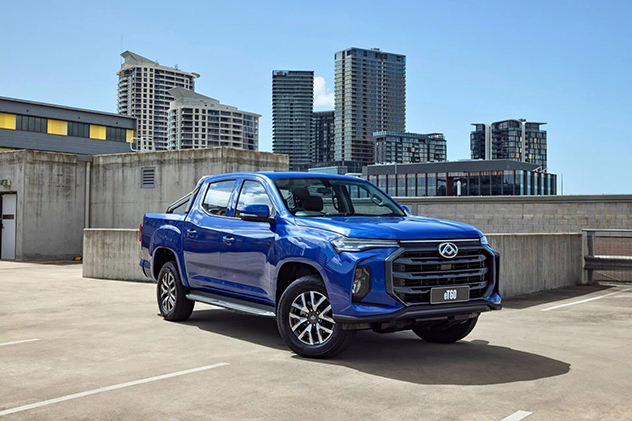
To say LDV was ahead of the curve in electric utes is an understatement, the company first showing its eT60 to the motoring press in late 2022. An Open Road journalist in attendance was less than impressed, remarking that “it’s as if LDV took its cheapest ute, plonked a battery and motor into it, and jacked the price into the stratosphere”.
That price currently remains at a little over $90,000 before on-road costs and, although substantial improvements were made between the pre-production model previewed and the one that went on sale, it still compares unfavourably to the far-cheaper Musso, with an 88.5kWh battery, a motor on the rear wheels that provides 150kW/310Nm, and a claimed range of 330km.
The eT60 also falls well short in the towing department, rated for just 1000kg braked or 750kg unbraked. It can, however, take a 1000kg payload.
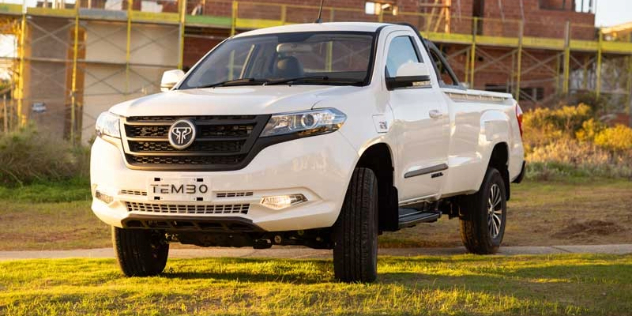
In July 2024, Dutch off-road specialist Tembo revealed it would sell the cheapest electric ute to date in Australia. Priced from $74,000, the dual-cab Tusker-D and single-cab Tusker-S are both available in rear and all-wheel drive options.
These utes, geared towards tradespeople and off-road enthusiasts, have 120kW-130kW of power, a V2L socket and up to 400km range. Tembo, acquired by Vivopower in 2020, trialled these vehicles in mining environments and first deliveries were made in late 2024.
The Australian electric ute segment is heating up with three intriguing entries poised to electrify the market: the Isuzu D-Max EV, JAC T9, and LDV's forthcoming electric pickup. Plus, the Ford F-150 Lightning is already available through remanufactured AUSEV. Each offers a unique blend of specs and features, aiming to cater to diverse tastes and requirements within the electric vehicle domain.

Perhaps the most interesting addition to the electric vehicle market will be the Isuzu D-Max BEV (battery electric vehicle). As one of the top five most popular vehicles in Australia, the fossil-fuelled D-Max ute is already a familiar sight on Australian roads.
Unveiled in March 2024 by the Japanese heavy-duty vehicle maker, the battery-powered version of the D-Max will boast a 66.9kWh battery on an all-wheel drive platform with 130kW power (40kW from the front motor and 90kW from the rear motor), outputting a maximum 325Nm torque.
With a maximum towing capacity of 3500kg and max payload of 1000kg, its ladder frame chassis promises decent off-road capabilities. Range will be 325km (WLTP), although it can only charge at a max 50kW, meaning a one-hour wait from 20-80 per cent. Nevertheless, the D-Max marks a significant move by Isuzu into the electric vehicle space. Isuzu said in a global release that it will launch the D-Max BEV first in “select mainland Europe markets,” such as Norway in 2025. A 2026 release date (and a rather alarming $100,000 price tag) for Australia have been rumoured, but so far Isuzu has made no official announcement.
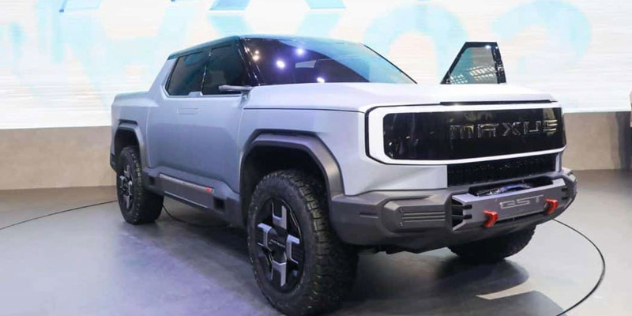
Source: Car News China
In 2024, LDV plans to release another electric ute in Australia, offering a range of 600km and off-road capability. Known as the Maxus GST in its concept form, it is expected to arrive locally in the second quarter of 2024.
While official production specs are yet to be confirmed, the Maxus GST concept uses a body-on-frame construction and a quad-motor all-wheel drive powertrain with 746kW power, achieving a 0-100km/h sprint in about three seconds.
Moreover, it will offer a vehicle-to-load capability and promises a tank turn function, a 400mm air suspension, a dozen terrain modes and rough terrain escape sensors that scan up to 50m ahead.
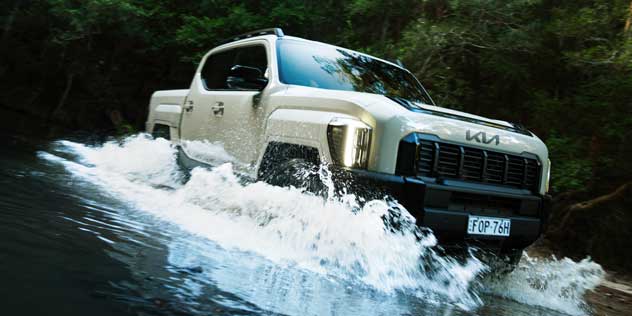
An all-electric electric ute from Kia was mooted to be making its Australian debut in 2026, following the launch of its diesel counterpart mid-2025. That was part of Kia's ambitious plan to introduce 14 new EVs within five years, although with diesel Tasman sales not meeting initial expectations, a Tasman EV might not be the priority it once was.
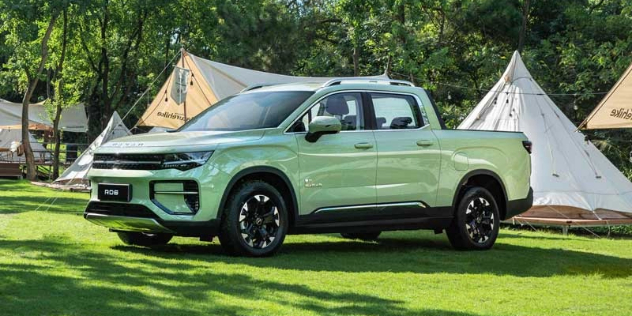
Volvo parent Geely confirmed it had plans for “global markets” when it unveiled its all-electric Radar RD6 in 2022, and in April 2024 it revealed the all-wheel drive version saying that subsidiary Radar Auto would expand into global markets including Australia.
The electric ute was previously expected to be sold under the Radar Auto moniker, but with Geely facing a trademark battle in Australia against a tyre maker also called Radar, it would likely sell in Australia under the Riddara name.
It went on sale in New Zealand in August 2025 as the Riddara RD6, priced from $NZ69,990 ($AU63,300) plus on-road costs, but at the time of writing no Australian launch date had been confirmed.
In China, Radar Auto sells the Riddara in two two-wheel-drive RD6 variants, and three Horizon four-wheel-drive variants, with features like 3000kg towing and 800kg payload, a hefty 21kW V2L (vehicle-to-load) bidirectional charging capacity, wade depth of 815mm, seven driving modes and acceleration from 0-100km/h in 4.5 seconds.
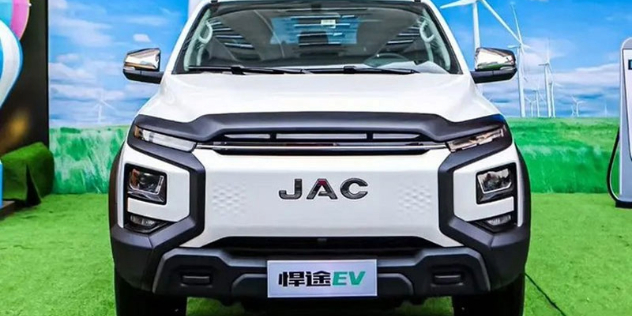
Source: Autohome
With the turbo-diesel JAC T9 ute now landed in Australia, an all-electric variant is expected to follow.
Official specifications and launch date for Australia are yet to be revealed, although a mid-2024 date has been previously been reported. Chinese media reports that it will debut at the upcoming Beijing Auto Show with a dual-motor 4WD format delivering peak power and torque of 70kW/176Nm for the front motor and 160kW/342Nm torque for the rear motor. A stack-welded frame encasing an 88.02kWh battery for a 500km range (an ambitious figure based on the Chinese testing standard known as CLTC.)
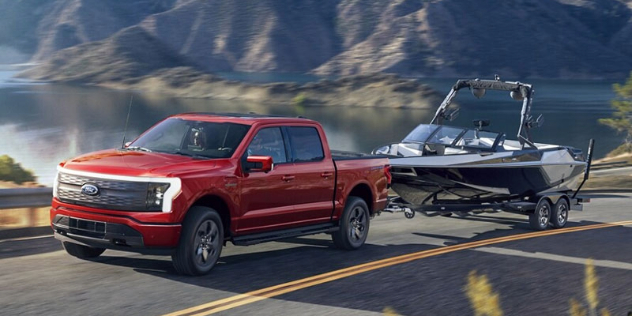
The Ford F-150 Lightning is now available in Australia, but at a hefty price. It's not available through Ford, but instead through remanufacturing outfit AUSEV.
Priced from $AU224,990 before on-roads charges and fees, it is available in two Standard Range and Extended Range variants.
Top specs include 515km driving range, 131kWh battery, 433kW power, 1050Nm torque and the ability to tow up to 4.5 tonnes.
It also includes a slew of towing assistance tech including backup and reverse assist/guidance, smart hitch, on-board scales and brake controller, and the ability to power a home using a home integration system during a blackout.
The Rivian R1T electric ute was available to the mining industry via EV fleet startup MEVCO, but word is that the business has gone into administration after a failed deal with mining giant Fortescue. Electrive states the firm had 13 Rivians in its fleet.
LDV originally said that an all-electric version of the Terron ute (launched locally in late 2024) would be arriving in early 2025. However a spokesperson has confirmed with Open Road that it is "still a work in progress." When and if it lands, it is expected to sport a 3.5 tonne tow capacity, with either a 200kW single-motor or 325kW dual-motor format. Also expect V2L, and an electric tailgate with spring-lift assistance for a 2.4m loading area.
BYD released its plug-in hybrid Shark 6 in late 2024 and industry scuttlebutt suggested an all-electric ute likely named the Shark 7 was on the cards for 2025, but it has yet to eventuate.
Arriving on local shores in early 2025, the $57,900 all-wheel-drive plug-in hybrid Shark offers a total output of 320kW including 170kW/310Nm for the front electric motor and 150kW/340Nm for the rear electric motor. This set up offers acceleration from 0-100km/h in 5.7 seconds according to BYD.
Its 30kWh battery pack delivers an all-electric driving range of up to 100km (NEDC, so about 70km in real world terms), and comes with a top DC fast charging rate of 40kW. It also comes with V2L, allowing drivers to use the battery - which is larger than the original Nissan Leaf's 24kWh battery pack - to charge devices and tools.
While these specs sound attractive, the payload capacity of 835kg (compared to 1000kg for some rivals) and tow rating of 2500kg (compared to 3500kg for certain rivals) had pundits expecting a luke-warm welcome. However, the Shark is now the fifth-most popular 4x4 in Australia according to figures from Vfacts.
It is thought the all-electric BYD ute will have a potential real-world driving range of 800km.
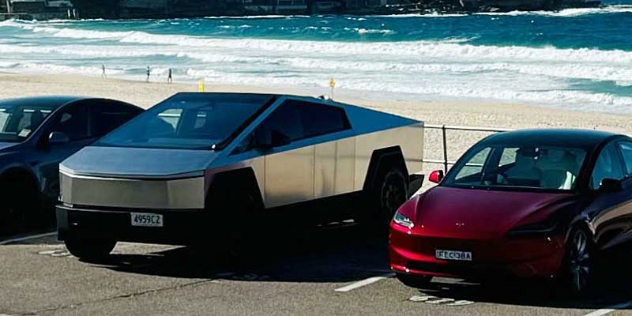
No electric ute list is complete without a mention of the Tesla Cybertruck, but though first deliveries began in November 2023 in the US, doubts remain about if and when it will arrive in Australia.
In April 2024, the Cybertruck arrived in Australia to do a tour of Australian Tesla showrooms so locals could see for themselves the angular electric ute close up. Known specs include a 0-100km/h sprint in under three seconds, towing capacity of 6350kg, and up to 800km driving range.
The Cybertruck also incorporates Tesla's signature tech features, Autopilot, and a durable exoskeleton. Meanwhile, other American automakers like Rivian, GMC, Bollinger and Ram have developed electric pickups, but there has been no mention of their arrival in Australia.
In August 2024, Toyota announced plans to trial an electric ute prototype in Australia, specifically designed for short trips.
Known as the Revo, the electric single-cab Hilux had just 300km range and a 4x2 powertrain.
Although Toyota exec Sean Hanley admitted he was impressed by its ride, he ruled it out as a true off-roader.
In May, executive vice president of Toyota Motor Asia Pras Ganesh confirmed to Reuters that the battery-electric Hilux would be produced for the Thai domestic market, which means it will be built in right-hand-drive.
Ganesh reportedly said that he would consider exporting the Hilux BEV - but not before considering how much range it would need.
"The more range I have to put on it, the more battery I have to put on it, which means the weight of the vehicle also becomes significantly heavier, which means the loading can be much less," Ganesh said according to Reuters.
"So 'Is it going to meet the customer's usage needs?' is always our biggest issue. We are always trying to understand what they do."
There are also reports of another concept codenamed the EPU that is aimed at families rather than tradies, that may make it here by 2030 according to Drive.
Toyota has not actually fully committed to bringing an all-electric pickup to Australia, although one has now been cofnirmed for Europe in 2026.
First seen at the Beijing Auto Show, the Poer electric ute will apparently be called the GWM Ute EV in Australia, following the trend of cutting the Ora Funky Cat electric hatchback name to a more easy-to-swallow GWM Ora.
Specs are said to include an electric power output of 150kW and a torque of 300Nm, with a range spanning 405km – however, an arrival date is yet to be announced.
Reference 1.https://theconversation.com/electric-utes-can-now-power-the-weekend-and-the-work-week-199600
10 May 2024: This article was updated to add information about the Tesla Cybertruck arriving in Australia, and the Ford F-150 Lightning on sale through AUSEV.
21 May 2024: This article was updated to add news that Toyota Asia will make a battery-electric Hilux for the Thai market, and information about the PHEV BYD Shark.
15 July 2024: This article was updated to add the Tembo Tusker and update information about the Riddara RD6 (
previously known as the Radar RD6) and Horizon.
24 November 2025: This article was updated to add information about the KGM Musso EV and other electric utes currently on sale in Australia.